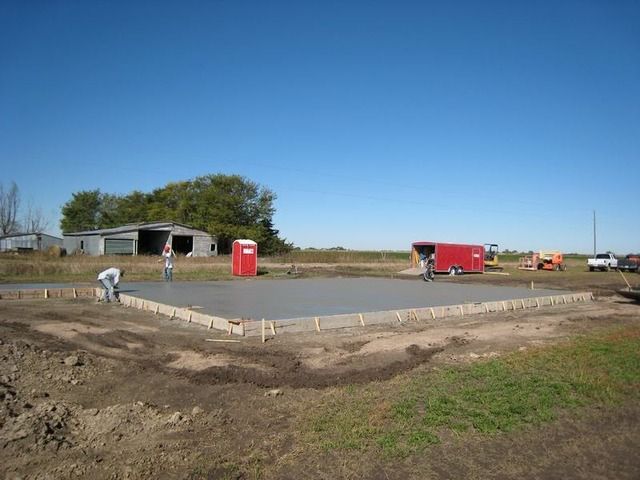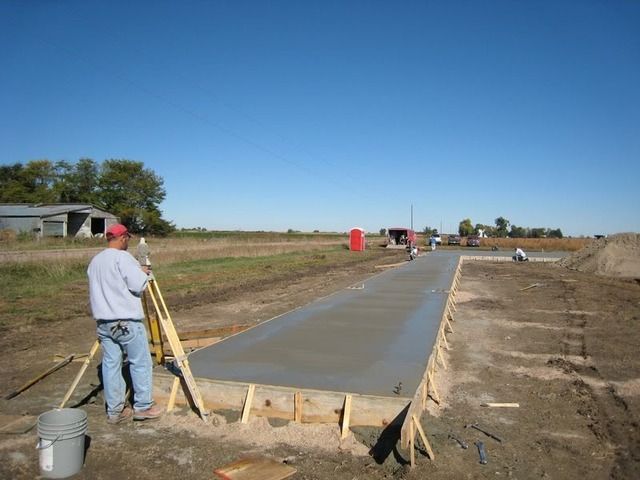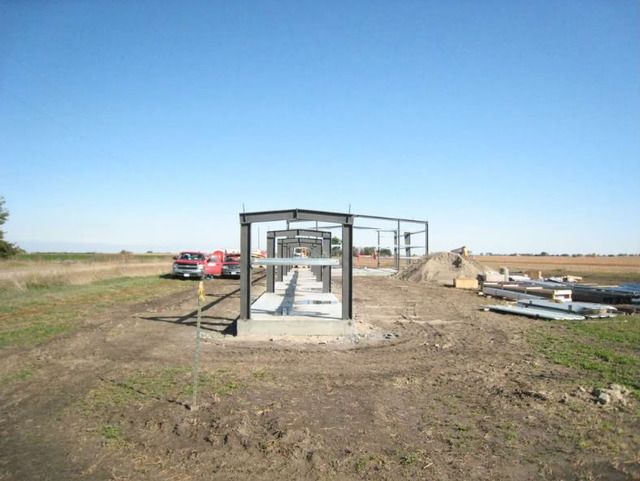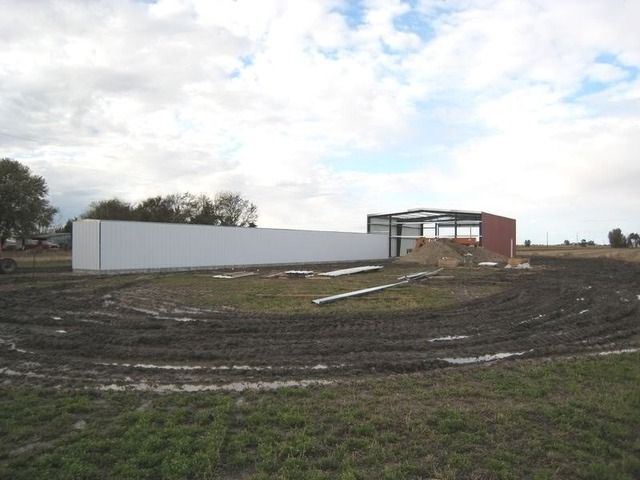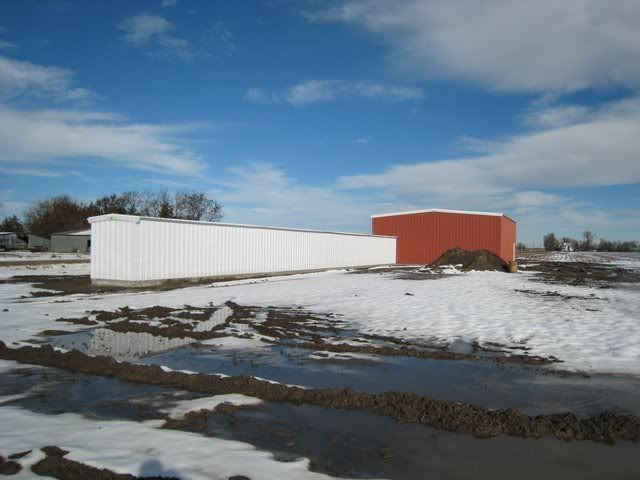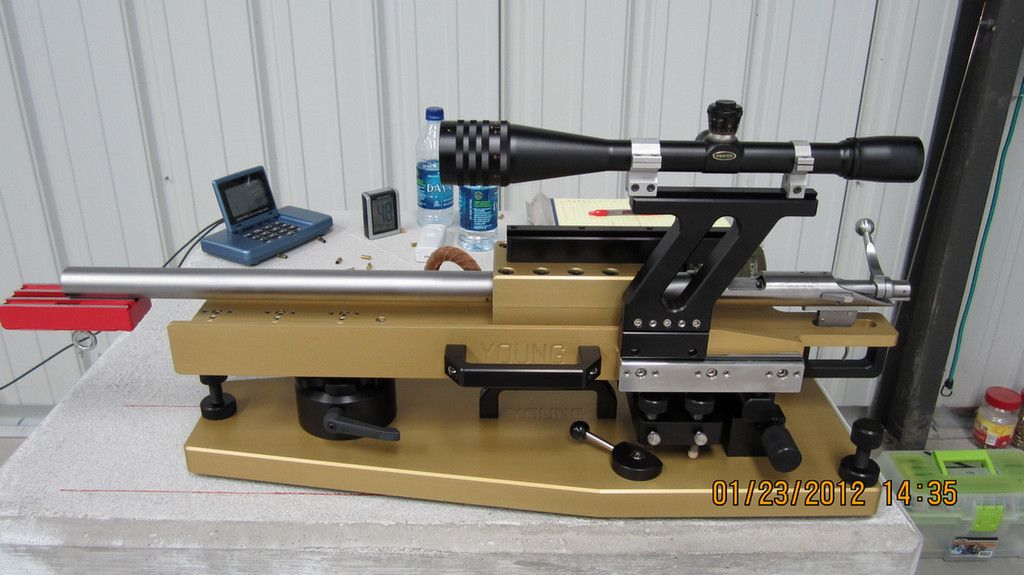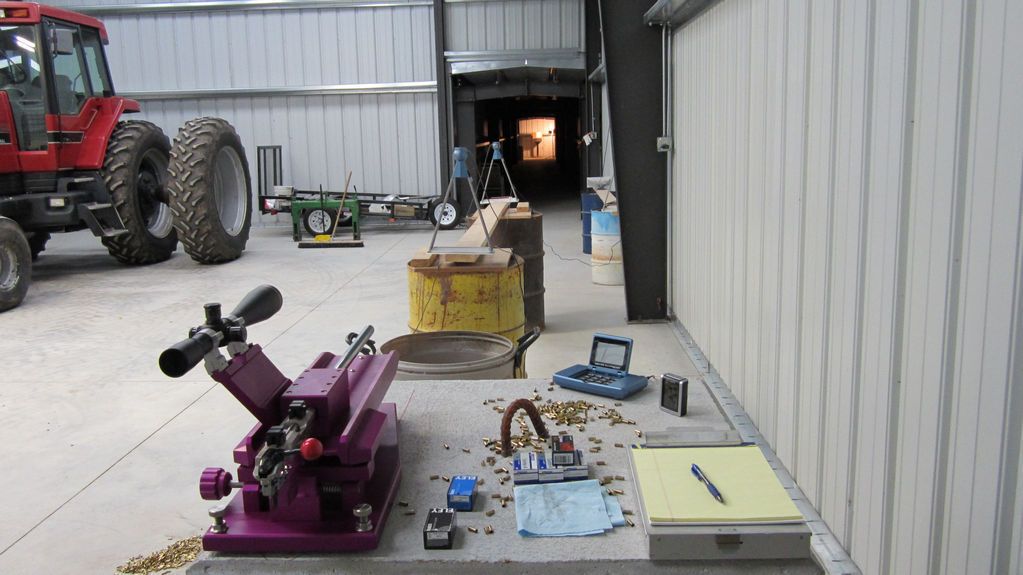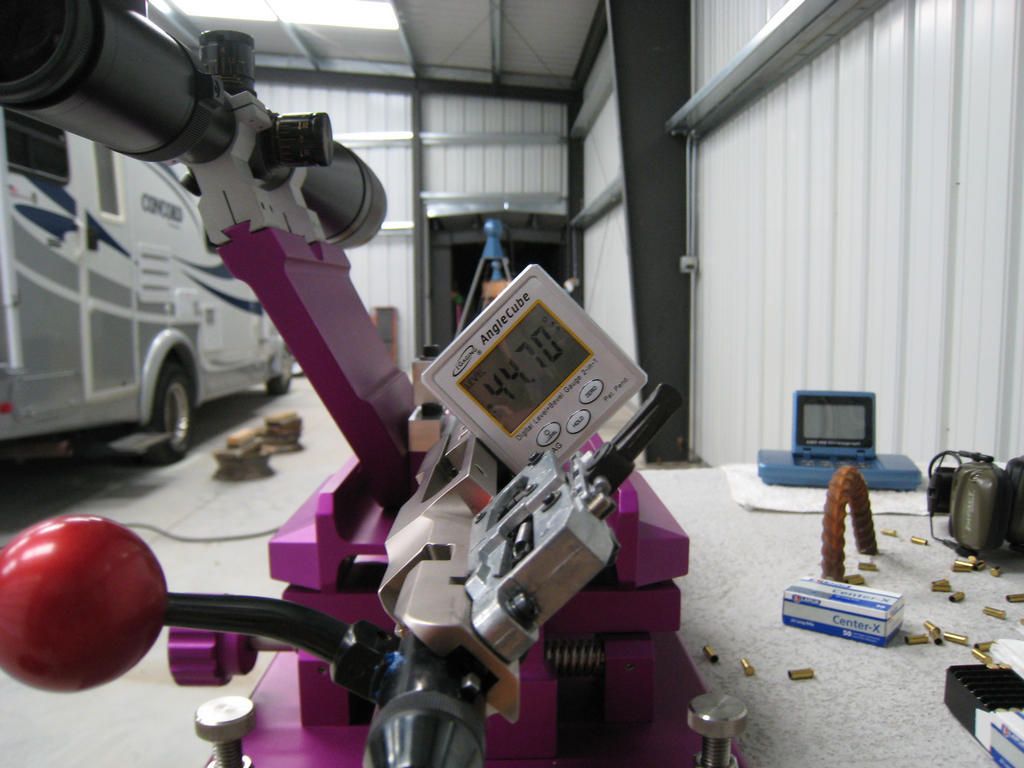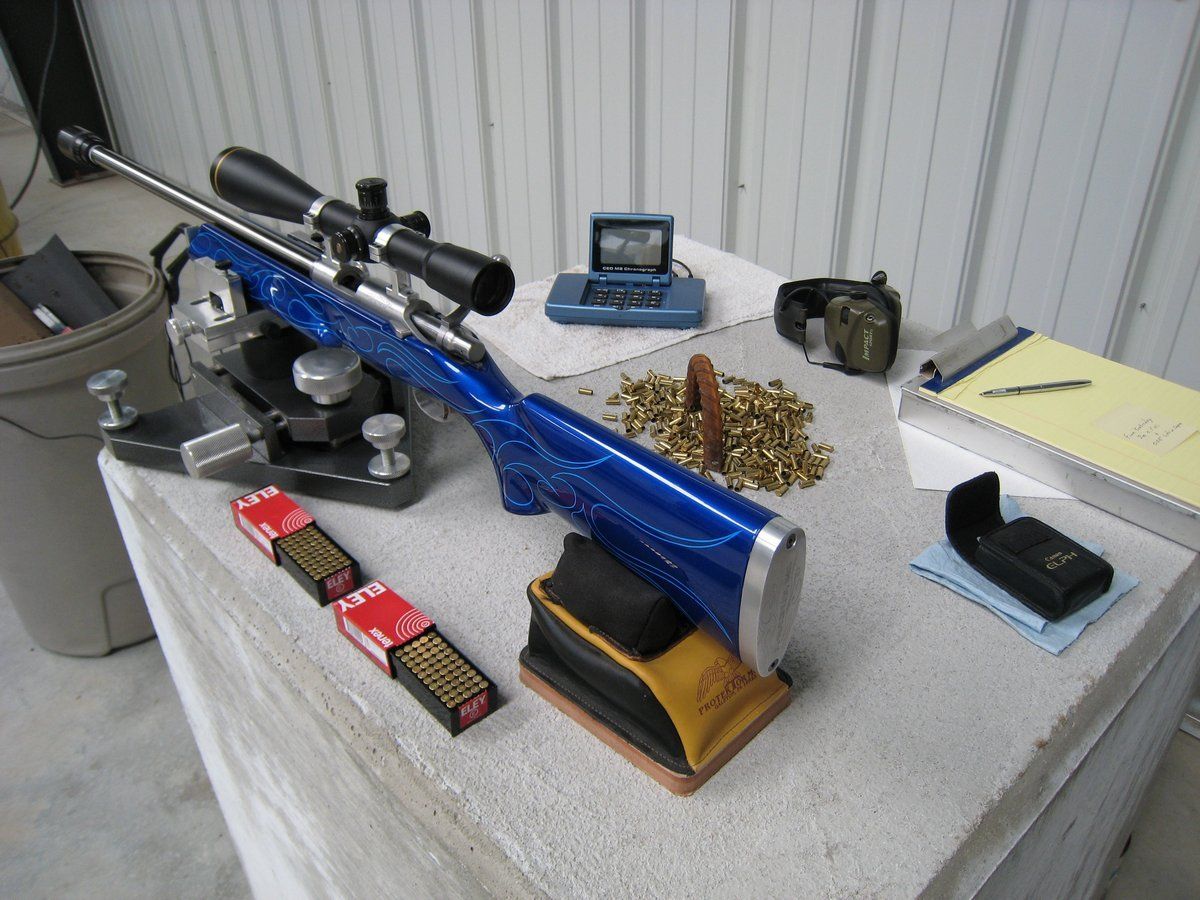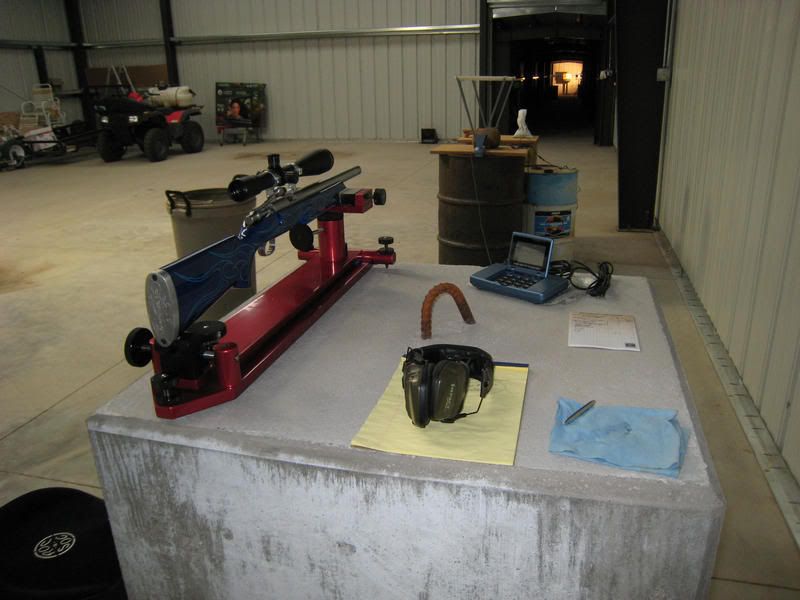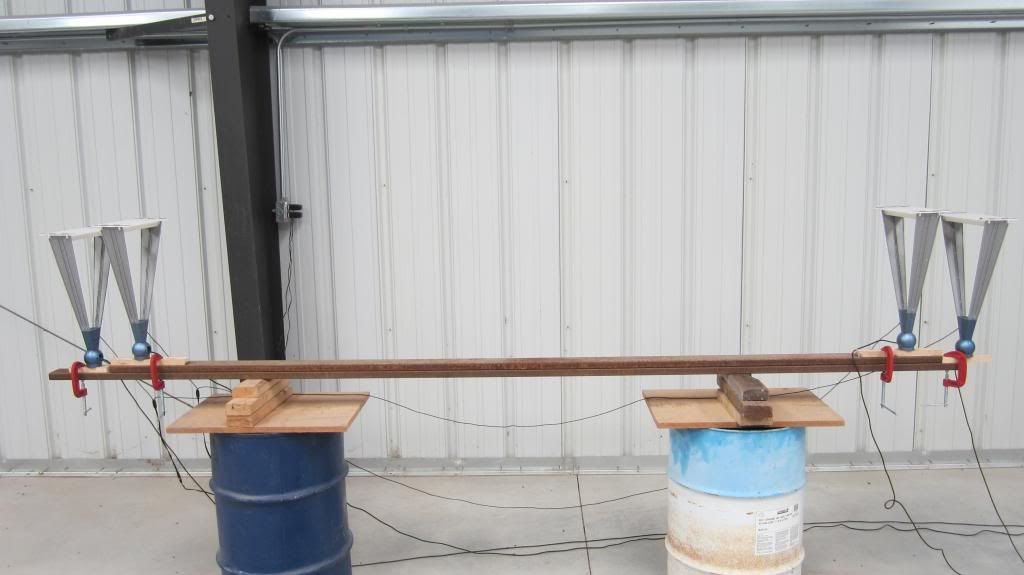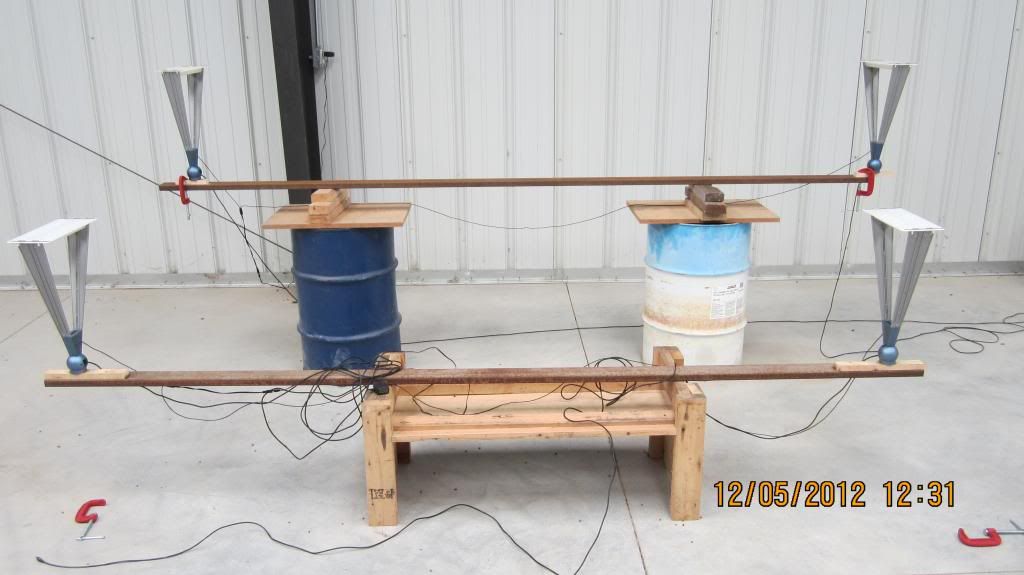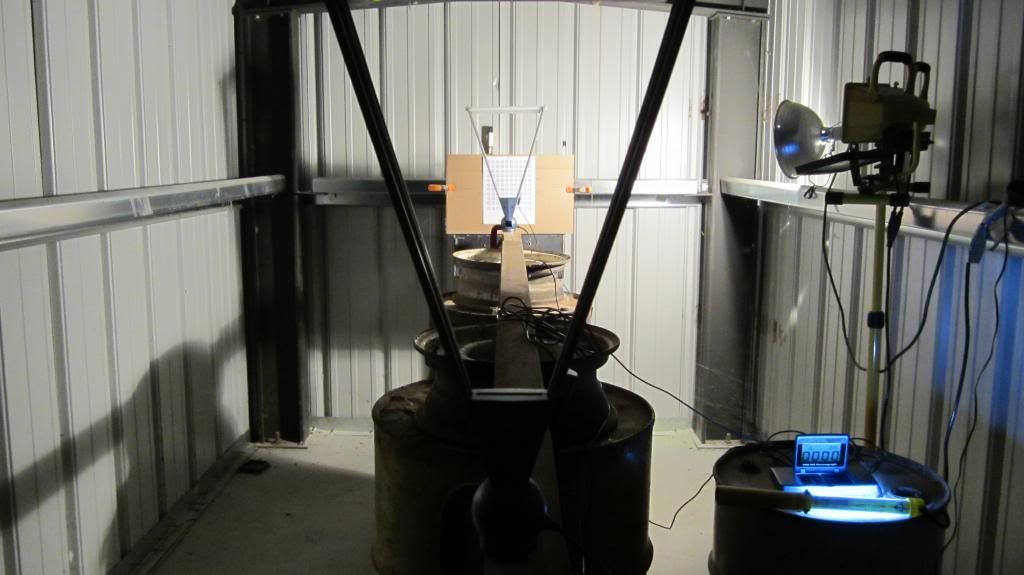michaelthomas
www.thomasrifles.com
When I built the last couple of rifles for Paul and Mark, I brought a third one up alongside them for my personal use. I finally got everything buttoned up and began testing it last weekend.
I shot Paul's rifle at our last match before shipping it out to him, and was able to shoot a 750 57x at LV power. I had honestly commented to my friend Joe that I wasn't sure Pauls rifle was capable of shooting a 9....because I had never shot one in all of it's testing....lol. All of the testing and shooting was done with JSB 8.44's right out of the tin. I attributed this performance initially to only one specific difference in his gun and my former guns.....which was the slow twist LW that he got from Dan.
It wasn't the only difference, though. I built the valves for all three of these rifles differently than all of my previous. They took on average 10-12 volts (which is a lot) less to produce the same power level. I wasn't sure of the individual significance of this at first.....but now, as I look back over the individual performances of these three guns with 3 different barrels I am seeing something different.
Marks' barrel was a standard twist poly LW that was not noted for it's stellar performance....especially at LV power. It was also a few inches shorter than full length. Mark had mentioned that it wasn't anything to shout about, and was maybe a 245 shooter. I was able to shoot a 750 39x or so with it using the unsorted JSB 8.44's, too. The barrel did not like being clean, and produced the best score of 250 18x after 2 cards and sighters were through it. I don't remember exactly what the first 2 cards were.....250 10 and 11x or so.
So far I have been able to shoot 8 cards with my new gun. It is a Plain Jane standard rifling LW barrel that is one of the original 5 I ordered nearly a year ago. So far every one of those 5 were capable of 250 15x in my old platform. This is the first test of any of those 5 in the new valve format gun.
I shot 2 cards last weekend with it, and they were 250 20x ,and 250 19x.
Yesterday I got the time to shoot 6 more. I shot 250 17x, 250 21x, 250 19x, 250 21x, 250 19x, and 250 20x.....in that order. So a 750 57x, and a 750 60x. These were also with JSB 8.44's from the tin.
This barrel seems to like being freshly cleaned.....the first 250 17 x was shot without cleaning, and approximately 75-100 chrony pellets and many sighters through it. The remainder of the cards were shot with the barrel cleaned prior to each card.
I have also been experimenting quite a bit with the level of tune. When I say tune, I mean the balance of power and solenoid strike. My former tune guide was to turn up the voltage until the gun would shoot no faster.....record the speed, then reduce strike until the velocity was somewhere between 30 and 40 fps less than the max. This had produced the best scores for me, despite it going against the prevailing logic that says that the tighter the spreads the better a gun should perform. If I turn up my current gun to near max power for a given reg pressure, I can obtain SD's of 0 and ES's of 1-2 FPS on my Comp Electronics chrony. It rounds to whole numbers, so in actuality 0 only means something less than .5. At 30-40 FPS below the max.....I see SD's of 1-2 and ES's of around 7.
I placed an indicator on the top of the barrel to measure muzzle rise at the different settings. At the 30-40 FPS below max tune....I see a movement of roughly .0002". This is with the gun resting on an aluminum block in the front and the rear just resting on the countertop. Near the max power setting (where the tightest velocity spreads occur) I saw over 5 times that amount. Shooting with no pellet in the chamber, at the 30-40 setting produced a movement of over .006" It happened so fast that I had to get a slo mo video app for my phone to actually be able to define the movement.
This past testing session was done somewhere in the middle.....with ES's of around 3-4. It seems as if it has not tipped the scale over the optimum accuracy vs tightest spread at this setting. This tune is about 20 FPS below maximum velocity for given reg pressure.
I gather from this that the smallest amount of muzzle flip could potentially equate to the smallest vertical deviations, but since this occurs where the velocity spreads are the highest (amongst the two extremes) ....there is somewhat of a tradeoff. Moving my tune to obtain the tightest spreads results in more vertical barrel movement, and potentially greater vertical stringing due to that in itself.
My original logic was to set the gun for the tightest spreads, then use a stripper to get rid of the excess air from that tune. I was never successful in reaching the consistent 19-21x's with any iteration of stripper and the "louder" tune......and so far I have not been able to isolate the actual stripper effects from the weight tuning effects of the stripper. I feel like the greater muzzle flip is a result of harmonics started long before the pellet leaves the barrel.....so it cannot be attenuated by something after it leaves.
So at the moment, I'm trying to find the breakover line where they (muzzle flip and ES) both balance themselves out for the greatest overall good.
Unfortunately......simply turning the voltage up and down alone results in velocity differences, so the experiments are kind of a pain for me because they involve very slight regulator adjustments in conjunction with voltage to keep the average velocities the exact same so the tests are as valid as can be.
Overall, I feel that my initial goal to absolutely minimize what happens before the pellet begins any movement in the barrel is a sound premise and has shown good results in every one of my guns and every barrel that has been tried in each.
I do intend to try my other plain LW barrels in this platform as well. Since I have an established baseline with them already, I should easily be able to see any improvements that may be directly attributed to the new valve platform.
Every time I feel like there is a obvious logical connection between an particular action and a following result.....I end up finding other not so obvious connections that could possibly weigh in more heavily than originally expected.....lol.
Mike
I shot Paul's rifle at our last match before shipping it out to him, and was able to shoot a 750 57x at LV power. I had honestly commented to my friend Joe that I wasn't sure Pauls rifle was capable of shooting a 9....because I had never shot one in all of it's testing....lol. All of the testing and shooting was done with JSB 8.44's right out of the tin. I attributed this performance initially to only one specific difference in his gun and my former guns.....which was the slow twist LW that he got from Dan.
It wasn't the only difference, though. I built the valves for all three of these rifles differently than all of my previous. They took on average 10-12 volts (which is a lot) less to produce the same power level. I wasn't sure of the individual significance of this at first.....but now, as I look back over the individual performances of these three guns with 3 different barrels I am seeing something different.
Marks' barrel was a standard twist poly LW that was not noted for it's stellar performance....especially at LV power. It was also a few inches shorter than full length. Mark had mentioned that it wasn't anything to shout about, and was maybe a 245 shooter. I was able to shoot a 750 39x or so with it using the unsorted JSB 8.44's, too. The barrel did not like being clean, and produced the best score of 250 18x after 2 cards and sighters were through it. I don't remember exactly what the first 2 cards were.....250 10 and 11x or so.
So far I have been able to shoot 8 cards with my new gun. It is a Plain Jane standard rifling LW barrel that is one of the original 5 I ordered nearly a year ago. So far every one of those 5 were capable of 250 15x in my old platform. This is the first test of any of those 5 in the new valve format gun.
I shot 2 cards last weekend with it, and they were 250 20x ,and 250 19x.
Yesterday I got the time to shoot 6 more. I shot 250 17x, 250 21x, 250 19x, 250 21x, 250 19x, and 250 20x.....in that order. So a 750 57x, and a 750 60x. These were also with JSB 8.44's from the tin.
This barrel seems to like being freshly cleaned.....the first 250 17 x was shot without cleaning, and approximately 75-100 chrony pellets and many sighters through it. The remainder of the cards were shot with the barrel cleaned prior to each card.
I have also been experimenting quite a bit with the level of tune. When I say tune, I mean the balance of power and solenoid strike. My former tune guide was to turn up the voltage until the gun would shoot no faster.....record the speed, then reduce strike until the velocity was somewhere between 30 and 40 fps less than the max. This had produced the best scores for me, despite it going against the prevailing logic that says that the tighter the spreads the better a gun should perform. If I turn up my current gun to near max power for a given reg pressure, I can obtain SD's of 0 and ES's of 1-2 FPS on my Comp Electronics chrony. It rounds to whole numbers, so in actuality 0 only means something less than .5. At 30-40 FPS below the max.....I see SD's of 1-2 and ES's of around 7.
I placed an indicator on the top of the barrel to measure muzzle rise at the different settings. At the 30-40 FPS below max tune....I see a movement of roughly .0002". This is with the gun resting on an aluminum block in the front and the rear just resting on the countertop. Near the max power setting (where the tightest velocity spreads occur) I saw over 5 times that amount. Shooting with no pellet in the chamber, at the 30-40 setting produced a movement of over .006" It happened so fast that I had to get a slo mo video app for my phone to actually be able to define the movement.
This past testing session was done somewhere in the middle.....with ES's of around 3-4. It seems as if it has not tipped the scale over the optimum accuracy vs tightest spread at this setting. This tune is about 20 FPS below maximum velocity for given reg pressure.
I gather from this that the smallest amount of muzzle flip could potentially equate to the smallest vertical deviations, but since this occurs where the velocity spreads are the highest (amongst the two extremes) ....there is somewhat of a tradeoff. Moving my tune to obtain the tightest spreads results in more vertical barrel movement, and potentially greater vertical stringing due to that in itself.
My original logic was to set the gun for the tightest spreads, then use a stripper to get rid of the excess air from that tune. I was never successful in reaching the consistent 19-21x's with any iteration of stripper and the "louder" tune......and so far I have not been able to isolate the actual stripper effects from the weight tuning effects of the stripper. I feel like the greater muzzle flip is a result of harmonics started long before the pellet leaves the barrel.....so it cannot be attenuated by something after it leaves.
So at the moment, I'm trying to find the breakover line where they (muzzle flip and ES) both balance themselves out for the greatest overall good.
Unfortunately......simply turning the voltage up and down alone results in velocity differences, so the experiments are kind of a pain for me because they involve very slight regulator adjustments in conjunction with voltage to keep the average velocities the exact same so the tests are as valid as can be.
Overall, I feel that my initial goal to absolutely minimize what happens before the pellet begins any movement in the barrel is a sound premise and has shown good results in every one of my guns and every barrel that has been tried in each.
I do intend to try my other plain LW barrels in this platform as well. Since I have an established baseline with them already, I should easily be able to see any improvements that may be directly attributed to the new valve platform.
Every time I feel like there is a obvious logical connection between an particular action and a following result.....I end up finding other not so obvious connections that could possibly weigh in more heavily than originally expected.....lol.
Mike


